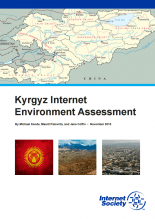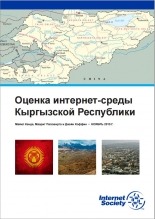By Michael Kende, Maarit Palovirta, and Jane Coffin
Executive Summary
The Internet Society is pleased to present its first report focusing on Internet development in Central Asia. The objective of this report is to contribute to the Internet development efforts in the Kyrgyz Republic by providing an analysis of the current Internet environment, and by proposing recommendations to reinforce the local Internet ecosystem. This report also aims to provide input to the regional discussions on Internet infrastructure development in order to promote economic and social progress across Central Asia.
The report focuses on the key opportunities and potential barriers to Internet development on both the supply and demand sides by examining recent progress in Internet infrastructure development and local content creation. We highlight selected policy and regulatory issues that have proven to be crucial in a global context when creating an enabling environment for Internet development. The report references key information and communication technology (ICT) indicators, global benchmarks, and best practices to support both the analysis and our recommendations.
Key Recommendations
- International connectivity. Develop a long-term strategy to increase the capacity and redundancy of international connectivity by taking regulatory and policy action to reduce current cross-border price markups, promote competition, and engage internationally to support new fiber routes to reach submarine cable landing stations.
- Domestic connectivity. Promote the shared deployment of, and access to, domestic fibre backbones, and work to build the role of the Internet exchange point (IXP) in allowing the exchange of domestic and international traffic and content.
- Last-mile connectivity. Ensure that operators, mobile in particular, have sufficient spectrum, and gain economies of scale by sharing existing and new infrastructure to help extend networks, while supporting new initiatives to reach un- or underserved rural areas.
- Content. Promote the development and hosting of local content to help make content delivery more efficient and to increase demand for Internet services among those currently unconnected.

